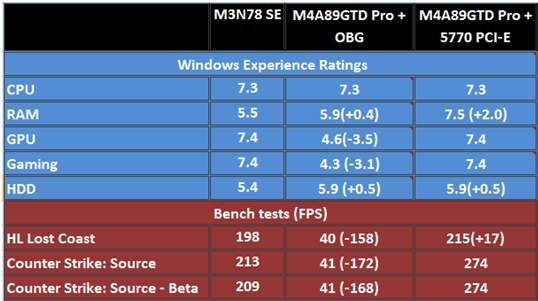On the 16 of this month (19 for those of us that live in UK/Europe) EA will release the game, Need for Speed: Hot Pursuit, which is a game that I amongst many others, am very excited about. It has been developed by Criterion, who also produced another of my favourite games, Burnout: Paradise City. During the interim period I started playing Need for Speed: World, and have been enjoying this game a lot, but I’m beginning to have certain doubts as to whether or not I should keep or cancel my HP pre-order, based on some of my experiences with playing World.
Before I talk about my doubts, I thought it would be interesting to mention some of the highlights about the series, particularly as over 100 million copies of NFS have now been sold in one form or another. I won’t go through the history of the franchise, that’s available on Wikipedia ( http://en.wikipedia.org/wiki/Need_for_Speed) but I will talk about the titles I’ve owned or played.
The first release in the franchise was, unsurprisingly, called Need for Speed, released for 3DO in 1994 with versions released for the PC (DOS) in 1995, followed by PlayStation and SEGA Saturn versions in 1996. The key features in this game included the Police chases where players could either be pursued or play the pursuer. It had cars that the player could unlock after winning tournaments and also featured an annoying NPC that would taunt players for getting busted or losing races. It also tried to simulate the driving characteristics of real cars, I remember trying it both at a friend’s house and as a demo, some details are a bit vague, but what I do remember is I didn’t really like it, I would have preferred a more arcade like game.
Need for Speed: Porsche Unleashed (Porsche 2000 in North America or Porsche in Germany) was another of the games that I didn’t end up buying myself. It was released in 2000, and there are no prizes for guessing that game featured cars made by Porsche, it was the game that featured the most realistic handling characteristics in the series and game had was filled with encyclopaedic information about the history of Porsche and its cars. The game allowed players to play an Evolution mode in which they could unlock and race the cars made from 1950 all the way up to 2000. The Factory driver mode let players take on the role of a test driver and try various tasks such as slaloms, speed races and deliveries, to advance their careers as they did so. I started playing this at my cousins house, and got to advance through a few cars, but found it lacked a certain quality that made me want to go back to it, I never really felt the need to get this for myself.
The next of the series to end up in my collection came after upgrading my PCs graphics card to one that supported the latest version of Direct X, I wanted a game that would let me enjoy the glory of Hardware Transform and Lighting and had read enough reviews to think that Need for Speed: Underground (2003) would be a great title to use for this. The mixture of arcade driving and street racing with new game modes including Drift, Sprint and Drag were really quite fresh for me, despite having been disappointed with the franchise twice before already I still went for it. The story mode with video cut scenes was compelling and it was the first game I ever played to completion, which I did twice to try it again with different cars. The game also featured more tuning options than had been previously available which added more depth, this was the main lure to make me return to the game and complete it again just to try the different cars and different tuning options.
Need for Speed title was Most Wanted (2005) was my first console version of the game, I got it on my PS2 again, the story mode had taken things to the next level by using live action video enhanced with CGI effects and within the story there was a Blacklist of drivers to beat, each of them giving up their cars when they were beaten. Players had to advance far enough into the game and upgraded their car to a suitable point before they were able to take on a Blacklist opponent, but tactical play meant that players would not have to buy many cars in game, they could win and then upgrade cars as they progressed through the game, though the upgrade options weren’t as good as they were in Underground and Underground 2. A Black Edition of the game was released which featured some additional cars including a BMW M3 GTR (E46) and a behind the scenes DVD.
I was excited about the release of Need for Speed: Carbon (2006) as the recent run of games released prior to this had been so impressive, but it really didn’t float my boat when I tried the Xbox 360 demo. The crew feature allowed players to form a team of racers, the player could call on one of those to run as a ‘wingman’ and then activate a driving skill that could be used to block opponents from overtaking, find hidden shortcuts or reduce Police attention. These team members also had other skills that were useful to give the player help with their cars such as fixer, mechanic, and fabricator. The story mode remained and new customisation features allowed players to sculpt their body kits for their cars. I think this game could have been so much better, but just somehow wasn’t, and I think it was the crew part of the game that spoilt it for me. I might have been happier if I could have got a crew that followed me based on achievements in the game, but then not actually drive with me; instead they could have just given me the mechanical, fabricating and repairer skills to help with my cars.
By now I had a newish PC, it was my first ever PC that I bought off the shelf, quite literally! It was an ex-display HP model with Intel Dual Core E6600 CPU and a Radeon GPU (I can’t remember the model, but I think it was the lower end of mid range cards) that I upgraded to an nVidia 8800GT (factory overclocked to 675mhz with 512mb ram, twice the amount that I had put in the first PC I built 10 years earlier). The frame rates on Counter Strike nearly double on my 19” Illyama TFT when I added that card, I needed a game that would let me enjoy my new hardware, Need for Speed: Underground was that game. The developers had looked back to the previously successful releases from the franchise, bringing back the free roam elements, the story mode, new highway battle modes, 12 new circuits, and sprint and checkpoint track configurations. I really liked this game, the reviewers didn’t share my enthusiasm, but that didn’t matter, I was having too much fun to pay any attention to them.
Not too long ago I found that there was a Free2Play version of Need for Speed, called World. A free version, sounded good, so I took a look and saw that there was indeed a version designed for online only play, well as luck would have it, I now had a good enough ADSL connection that would allow me to play online, so I thought I’d give it a try. There were options to go for a free version that was capped so players couldn’t progress beyond level 10 and had a smaller selection of cars to choose from or a paid version where for £14.99 or $20 in North America players could advance to level 50 and choose from 5 extra cars. The game had gone back to its illegal street racing, tuning and Police chase routes, though it’s not possible to play the role of Police in this version. It had maps that were built up from maps I had previously driven in, but not on my newly built AMD Phenom II X4 3.2ghz computer and 23” Samsung 1080P TV it looked better than I had ever seen it before, and to top it all instead of a single player story mode I could race against real opponents.
So what’s the problem, well there are a few, I paid the £14.99 as I thought that it would be nice to reward the developers for their hard work and in return get exclusive content that was only open to paying customers. Then EA decided to remove the caps and allowed all players to play beyond level 10; I still had the exclusive cars, except 4 of these were only available as rental cars meaning I had to use some of my Speed Boost that I got when I paid my £14.99 to use my exclusive cars, and now these same cars are available to everyone. I’m a reasonable guy, it is understandable that EA would have costs to cover, paying for servers and infrastructure etc... Only when playing the game, players in the free roaming world are openly exchanging information that tells them where they can go to download hacks that allow them to get free boost for renting cars, they have been using hacks that let them drive a 5 mile route in less than 20 seconds, though I think EA have stopped that now, and now a level 14 player can get a tier 3 car with speed boost even though you have to be level 40 to buy it normally. These are issues that frustrate me with the game, in most cases I have found strategies to limit some of these issues, such as playing on tier restricted races so that Pay2Win players and Speed Boost hackers can’t take advantage, I have also learnt to use the weapons to counter some of the ‘dirty’ tactics that some players use, but all the time I remind myself that it is a free game for most of the players I come up against.
I really want to get Hot Pursuit when it comes out, but these little niggles are just playing on my mind and I can't help thinking is this going to happen with this game? On the other hand, I have played Burnout: Paradise City, I love it, it’s one of my favourite games and it’s by Criterion. Criterion are the developers behind Hot Pursuit, and in the demo on the Xbox it plays a lot like Burnout, so I think it will be a lot better. What do you guys think? Will Need for Speed: Hot Pursuit be as good as I hope it will be? Or am I just letting my past joy with previous titles in the franchise get the better of me?


Log in to comment